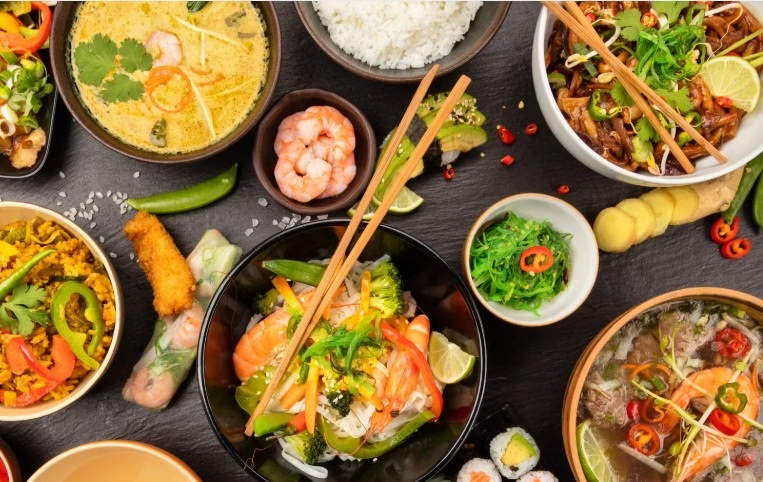Chinatown is a vibrant tapestry of cultures, flavors, and aromas. One of the most cherished aspects of this bustling neighborhood is its chinatown hawker leftovers consumption. The stalls are filled with mouthwatering dishes that draw locals and tourists alike. But what happens when you have leftovers? Rather than letting them go to waste, savoring those remnants becomes an art form in itself.
Leftover hawker food isn’t just about convenience; it’s a delicious journey through the culinary landscape of Chinatown. Each bite tells a story—a blend of spices, textures, and memories that transport you back to the lively streets where they originated. Embracing these leftovers allows you to relive those moments long after your meal has ended.
Join us as we explore the history behind hawker food in Chinatown, celebrate the allure of leftover consumption, and share tips on how to select and enjoy every savory morsel from your favorite stalls!
Savoring the Past: The Art of Enjoying Chinatown Hawker Leftovers Consumption
Savoring Chinatown hawker leftovers is more than just a way to avoid waste. It’s a delightful experience that reconnects you with the vibrant culture and flavors of this iconic culinary scene. Each dish carries memories, from lively market conversations to the tantalizing aromas wafting through the air.
When enjoying leftovers, take your time to appreciate each bite. The flavors often deepen as they meld overnight, transforming simple meals into complex tastes. Reheating isn’t just about warming; it’s an opportunity to enhance the experience through thoughtful pairing or garnishing.
Consider how you can elevate these dishes further—whether by adding fresh herbs or incorporating new textures. Embrace creativity while honoring tradition as you transform yesterday’s meals into today’s gourmet delight, celebrating every moment spent in Chinatown’s food paradise.
Chinatown Hawker Leftovers Consumption Intro
Chinatown is a vibrant tapestry of culture, history, and culinary delights. Among its treasures are hawker stalls offering a feast for the senses. The bustling atmosphere invites you to explore flavors that tell stories of generations past.
Hawker food is more than just a quick meal; it embodies tradition and community spirit. Each dish carries with it the heritage of those who came before us, making each bite an homage to history. Leftovers from these stalls serve as delicious reminders of this rich narrative.
The charm lies not only in enjoying fresh dishes but also in savoring what remains after the initial rush. Embracing Chinatown hawker leftovers consumption allows food lovers to connect deeper with their meals, discovering new ways to appreciate beloved favorites long after they’ve left the stall.
History and Significance of Hawker Food in Chinatown
Hawker food has deep roots in Chinatown, tracing back to the late 19th century. Street vendors began selling affordable meals to cater to the needs of immigrants and laborers who sought comfort in familiar flavors. Over time, these humble stalls transformed into vibrant hawker centers that celebrated diverse culinary traditions.
The significance of hawker food lies not only in its taste but also its cultural heritage. Each dish tells a story, blending influences from Chinese, Malay, Indian, and other cuisines. It reflects a rich tapestry of history shaped by generations passing down family recipes.
Today, hawker food is more than just sustenance; it’s an integral part of daily life in Chinatown. Locals and tourists flock to these bustling spots for authentic experiences that evoke nostalgia while celebrating community connections through shared meals.
The Allure of Leftover Hawker Food
Leftover hawker food holds a unique charm that captivates both locals and visitors. These dishes come packed with flavors, reflecting the rich culinary heritage of Chinatown. The remnants from bustling stalls tell stories of vibrant markets and late-night cravings, evoking nostalgia.
The allure lies in their transformation over time. As they sit, ingredients meld together, intensifying the taste profile. A simple char kway teow can develop deeper umami notes when enjoyed the next day—an experience like no other.
Moreover, savoring leftovers is an adventure in creativity. Each bite invites you to explore new textures and flavors as you pair them with sauces or sides found at home. This playful aspect makes leftover hawker food not just a meal but a delightful opportunity for culinary exploration.
Tips for Selecting the Finest Leftovers
When it comes to selecting the finest Chinatown hawker leftovers, freshness is key. Look for dishes that still exhibit vibrant colors and enticing aromas. Avoid anything that appears wilted or overly greasy; these indicators often signal less-than-optimal quality.
Next, consider the packaging. Opt for containers that are well-sealed to prevent contamination and ensure flavors remain intact. If you’re at a bustling food market, watch how busy vendors manage their stock—those with quick turnover rates usually have fresher options.
Don’t hesitate to ask about storage time. Vendors often know their products best; they can guide you on which items will taste delightful even after a day or two in your fridge. Trust your instincts as you select those irresistible remnants of culinary artistry.
Favorite Dishes and Techniques for Enjoyment
Chinatown is a treasure trove of hawker delights, making leftover consumption an adventure. Think about char kway teow, with its smoky flavors and tender noodles. Reheating it in a hot wok brings back that street-side charm, reviving each bite’s essence.
Next up: Hainanese chicken rice. The fragrant rice and succulent chicken can be enjoyed cold or gently warmed. A drizzle of soy sauce or chili paste adds flair to every mouthful, transforming your meal into something extraordinary.
Don’t overlook the crunchy goodness of spring rolls either! These delightful bites remain crispy when reheated in an air fryer. Pair them with sweet chili sauce for a burst of flavor that takes your senses on a journey through Chinatown’s vibrant streets—one delicious leftover at a time.
Innovative Ways to Recreate Leftover Hawker Food
Transforming leftover hawker food can be an adventure in your kitchen. Think beyond reheating; consider creating a fusion dish that highlights the original flavors while introducing new elements. For instance, leftover char kway teow can become a delicious fried rice by adding eggs and vegetables.
Another creative idea is to incorporate leftovers into hearty soups or stews. A bit of broth, some fresh herbs, and those remnants of curry chicken or laksa will blend beautifully for a comforting meal. This not only enhances the taste but also minimizes waste.
You might also experiment with wraps or sandwiches using leftover fillings from dumplings or spring rolls. Adding fresh greens and sauces elevates these simple creations into delightful bites that capture the essence of Chinatown’s vibrant culinary scene.
Embracing the Delectable Experience of Chinatown Hawker Leftovers
Embracing the experience of Chinatown hawker leftovers goes beyond just satisfying hunger. It’s about connecting with a rich culinary heritage, relishing flavors that tell stories of tradition and community. Each bite carries memories, whether it’s the aroma of char kway teow or the spicy kick of laksa.
Taking time to enjoy these remnants allows you to appreciate the craftsmanship behind each dish. Transforming them into something new can be an exciting adventure in your kitchen. Mixing leftover ingredients can yield delightful surprises that honor their origins while adding a personal twist.
Moreover, sharing these experiences with friends or family amplifies enjoyment. Gather around as you all reminisce over dishes enjoyed together and explore how they taste when reimagined. The act becomes not just about food but also bonding—creating new memories layered on top of old ones.
So next time you have Chinatown hawker leftovers, savor every moment spent enjoying them. They are more than just scraps; they’re gateways to nostalgia, creativity, and connection within our bustling food culture.

